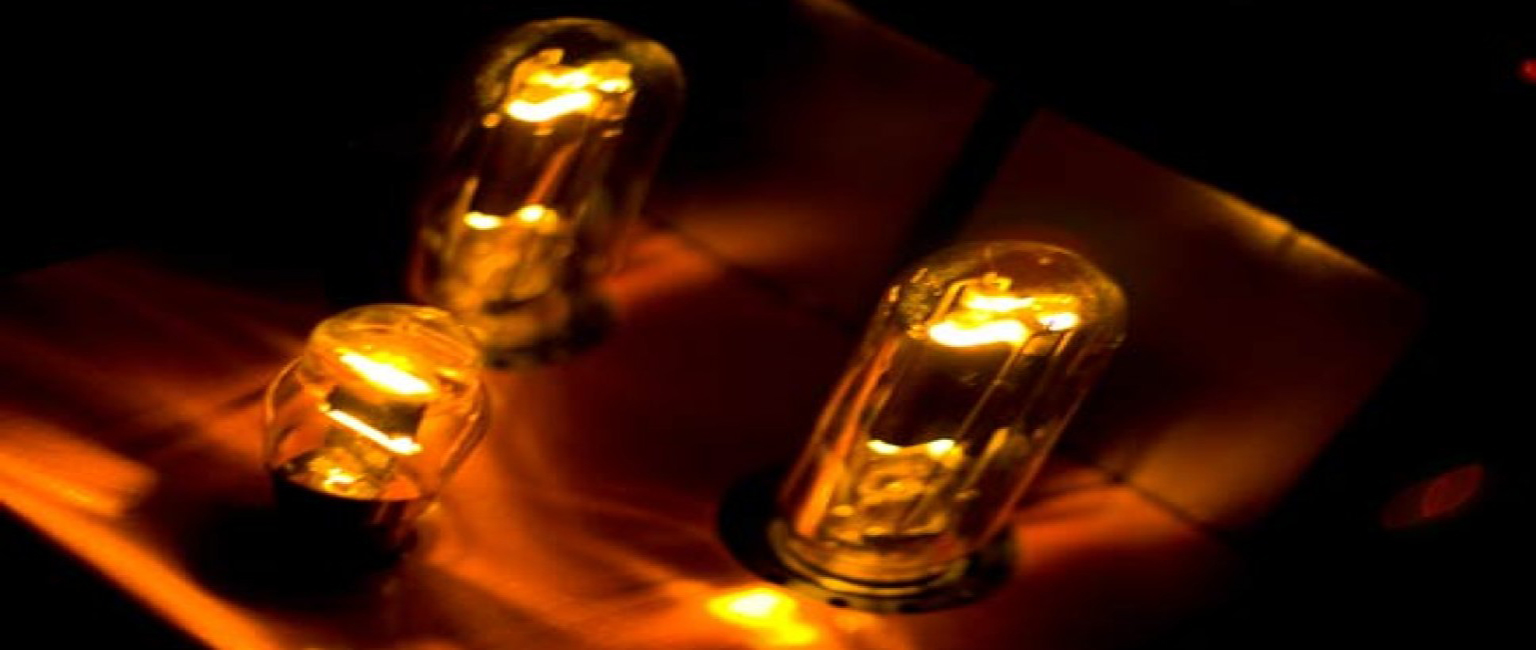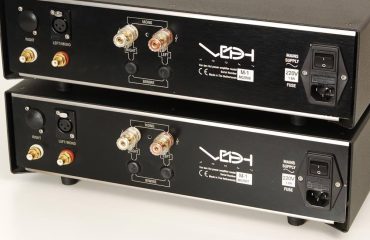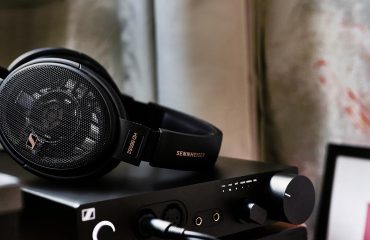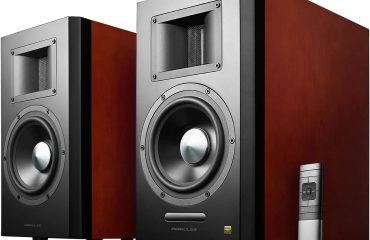
A first tour of the high end exhibits
Is the high end audio portion of CES smaller this year? Yes, and that’s easily verifiable, but even so one day’s tour didn’t let us see everything. Not yet. Good thing it’s not a one-day show.
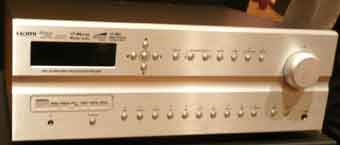
We’ve been waiting patiently (or perhaps not so much) for the true high end companies to come out with up-to-date audio processors for home theatre. The very expensive Moon unit is not actually to be had. The Bryston SP-3 (at right) was shown last year and was about to ship. It’s back this year, and it’s about to ship…second or third quarter. That could mean as late as September 30th. The Arcam unit, on the other hand, is actually available and costs $8000. The Bryston will be the same price, or $2000 more with built-in video switcher. Is it time for us to go shopping?
Bryston did give us a demo though: a prototype server, a BCD1 converter, Bryston preamplifier and monoblocks, and Thiel CS 3.7 speakers and SS2 SmartSubs. The room was a cube with glorified cardboard walls, but the sound was nonetheless more than respectable. Some of the music included Reference Recordings’ high-resolution files.

The E.A.R. room, as usual, featured the designs of Tim de Paravicini, such as this unusual two-armed turntable. Alongside it were a pair of Tim’s costly but very good monoblock tube amplifiers. The speakers were Martens, from Sweden, with ceramic drivers. Very nice.
One of the pleasant rooms was that of Bel Canto, which was showing its awkwardly-named e.One series, consisting of CD transport, DAC, preamp and monoblocks, none as big as a breadbox. They were driving TAD speakers, and certainly the sound was impressive.
We had been looking forward to hearing the Volent speakers, about which we had heard a great deal. The source was a music server (there were a lot of them at this show, including some low-cost netbooks). We don’t know whether to blame the source, the Bladelius electronics, or the speakers themselves, but we were disappointed.

Of course we know how difficult it can be to pull a lot of gear into a hotel room and somehow make it sound right together. We were more enthusiastic about Rogue Audio’s latest tube preamplifier, the Hera II, at right. This two-piece unit, at $8K, is the company’s flagship. It was accompanied by a pair of large Rogue Apollo monoblocks, feeding a pair of Wilson Watt Puppies. Also borrowed was a Bel Canto CD player which had been borrowed at the last moment as a replacement for a recalcitrant player. Ad hoc combinations don’t always work out well, but certainly this one did.
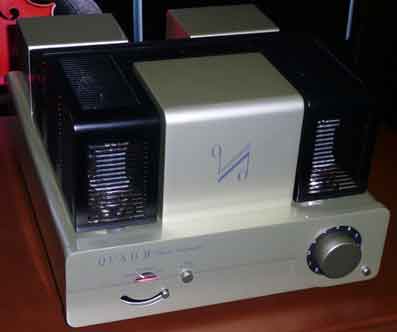
Over in the Quad room, a pair of 2805 electrostatic speakers were making sweet music with an amplifier we hadn’t seen before. Larger than the Quad II, the Classic Integrated’s key feature is that volume knob. Yes, it’s an integrated amp, and that smile-shaped switch at the left of the front panel is an input selector. Like the original, this is a class AB amplifier using push-pull 6L6 tubes (the ancestor of the extended “KT” family) to produce 25 watts per channel.
The source was analog, as it was in a number of rooms at the Venetian, a new $3595 model from Merrill-Williams the R.E.A.L. 101 (the initials stand for “Rubber Elastomer Acoustic Laminate). That price doesn’t include the Ortofon tone arm and cartridge. The music from the combination was decidedly easy on the ears.
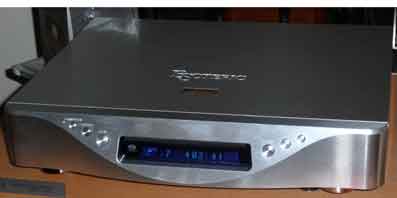
Teac had a room for its upscale Esoteric line of components, including its MG-20 floorstanding speakers, which were shown last year though we couldn’t recall hearing them. They’re $8200, and the “MG” in the model name stands for magnesium, used in the making of both woofers and tweeters.
New this year, however, was the unit above right, the RZ-1, a sort of Swiss knife of audio. In its slim chassis are an amplifier (class D, sometimes referred to semi-accurately as a digital amp) and an SACD player. Where do you insert the disc? There’s a slot just over the display, though you really need to know it’s there. Whn we were there the actual source was an inexpensive Acer netbook, loaded with uncompressed music files. And let the good times roll!
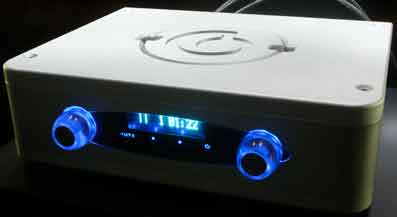
A company that was new to us had its own Swiss knife of sorts. The Chapter Sonnet, at left, includes a CD drive (you lift up the large logo on top to uncover it), and a DAC with multiple inputs that can serve as a digital preamplifier. The price is $9195. It and a gigantic power amp from the same company was driving a huge pair of Magnepans.
Large Spendor speakers were being fed from a pair of economy products, a CD amplifier and integrated amplifier from Exposure. For contrast, the same music was then played with the addition of the Chord QBD76 digital-to-analog converter. The result was more like real music, with less of the “punch” that can lead to listener fatigue, and with richer body in the lower midrange. The DAC includes a good set of inputs, including USB and wireless Bluetooth.

Mike Creek’s Epos speakers are best known for being moderate in size and price, but here he is with a new flagship, the Encore 50, which is large and — at around $10K — no longer in the economy class. They were matched with Creek’s upscale amplifier and CD player line, the Evolution series. The combination sounded superb, with plenty of punch, thought none of it sounding artificial or tiring. “It had to be large,” explained Mike of his speaker. “When you say you have a flagship, no one expects it to be a bookshelf speaker.”
The Artemis Labs room included the company’s electronics and turntable with a new speaker from Japan, the $40K FAL It’s an unusual speaker, featuring two flat rectangular woofers and a Heil tweeter. The sound was warm and intimate, worth spending some time with.
There was a very good room showing off a complete line of Electrocompaniet products from Norway. The newest member of the famous family is the Nordic Tone Model One speaker. It’s heavy, 75 kg each, with a cabinet made from sand-loaded aluminum. The sound was compelling, with a stereo image that stayed distinct even if you moved up between the speakers.
Another large pair of speakers, from Venture, caught our ear. It was the first time we had seen them other than on an Internet press release. We were struck by the quick and precise transients, something seldom associated with speakers that large. Brass tone was particularly excellent.
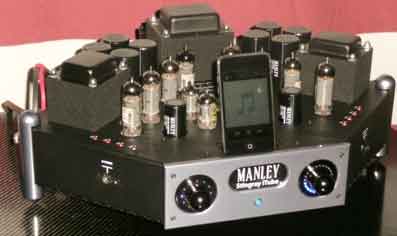
We spent a few minutes with the new $3400 Manley Stingray iTube, whose addition over the previous iteration is obvious: a place to park your iPod. The amp uses the iPod’s own DAC, however, so the slot is just another analog input. We actually heard it with a better source, a Manley music server, and a pair of Gershman Sonogram speakers. The output tubes, by the way, are the small EL84’s, but as you can see there are four of them for each channel.
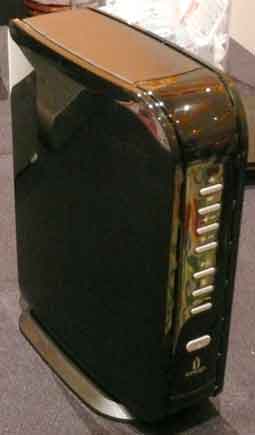
There were two evening events. One was a get-together in memory of Jim Thiel, the founder of, and guiding light behind, the speaker company that bears his name. Jim died in September not long before his 62nd birthday. The company continues, thanks to his habit of meticulously documenting his designs.
The other evening event was ShowStoppers, an annual off-site party for journalists and exhibitors who want to meet them. We’ll tell you more about it in our print edition, but we can already draw your attention to the device at right. It’s from Iomega, and its built-in hard drive can be filled with video and music files from a Windows PC or a Mac, and then attached via HDMI to your HDTV. It has Wi-Fi and Ethernet connectivity as well. On paper at least, it might be everything the Apple TV promised but has so far failed to deliver.
The device costs $250. For half the price, a much smaller device offers the same commodity, but you supply your own hard drive. Interesting.
Tomorrow we’re off to T.H.E. Show, the long-running “rebel” high end audio show that the CES organizers have, so far, not succeeded in putting out of business. Last year it languished in a hotel far from the action. This year it’s at the Flamingo, right on the Las Vegas Strip, and a short walk from the Venetian. We’ll see whether this new location has given the show a new lease on life.

